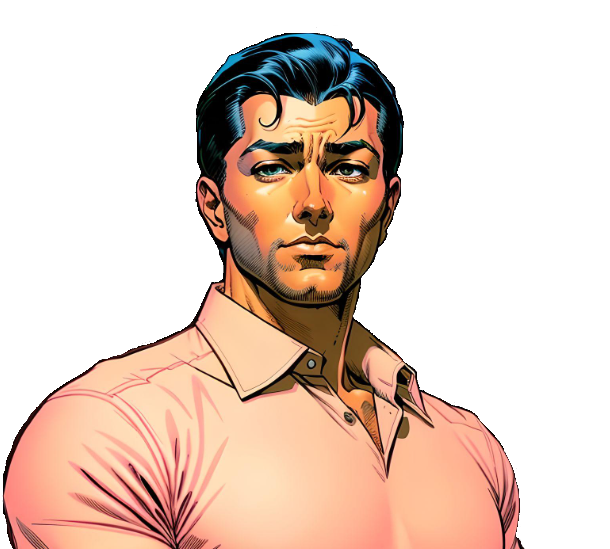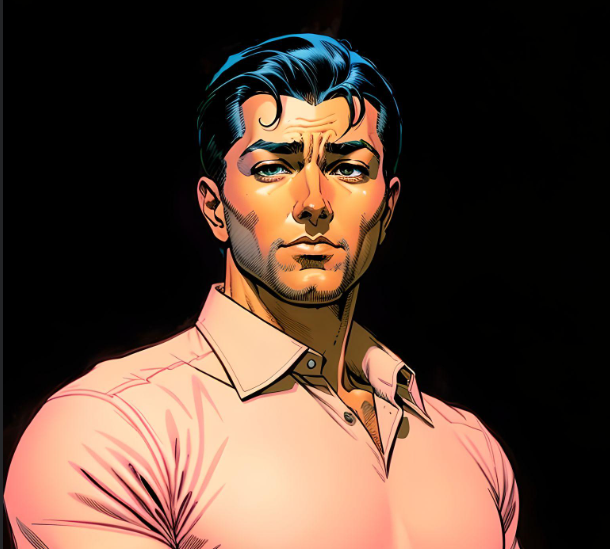Screenshots with Go
Table of Contents
Introduction #
I was looking for different ways to automate capturing a screenshot of my desktop. It would be possible to use python but using go may be faster since it is a compiled language. Then I will need to figure out how to capture portions of my screen instead of the entire thing incase I want to avoid capturing any timestamp from the operating system’s clock.
Environment #
Language: Go version 1.21
Operating System: Windows 11 (developed) - Linux Ubuntu (tested)
kbinani’s repo for taking screenshots #
In this exercise we will be importing kbinani’s screenshot library to capture desktop screens to a .png image.
Brief overview of this libraries features:
- Go library to capture desktop screen.
- Multiple display supported.
- Supported GOOS: windows, darwin, linux, freebsd, openbsd, and netbsd.
- cgo free except for GOOS=darwin.
In this blog post I will be discussing the first two points above, since I am developing this program on Windows 11. I have tested capturing a few screenshots on Linux Ubuntu but I haven’t modified the code to detect the OS and crop the image’s timestamp out. This feature currently only works on Windows 11.
kbinani’s library is relatively simple since there are only five functions:
- Capture
- Capture returns screen capture of specified desktop region. x and y represent distance from the upper-left corner of primary display. Y-axis is downward direction. This means coordinates system is similar to Windows OS.
- CaptureDisplay
- CaptureDisplay captures whole region of displayIndex’th display, starts at 0 for primary display.
- CaptureRect
- CaptureRect captures specified region of desktop.
- GetDisplayBounds
- GetDisplayBounds returns the bounds of displayIndex’th display. The main display is displayIndex = 0.
- NumActiveDisplays
- NumActiveDisplays returns the number of active displays.
More information about this librarie’s functions at its pkg.go.dev repo.
Explanation of Code #
Before diving into the code I will give a brief overview on the folder structure for this project. As this is a simple program, we also have a simple folder structure.
Working Directory #
Your working directory, called screenshot, should look like:
- screenshot
- main.go
- go.mod
- go.sum
- img
img directory does not need to be created, this will be done automatically. The file main.go is where all our go code will be since this is a simple program. The other two files go.mod may need to be cleaned up using the go mod tidy command in the working directory to manage any dependencies, and go.sum file is used to validate the checksum of each direct and indirect dependency to confirm that none of them have been modified.
Imports and Package Name #
Below we name the package package main and after this import all the necessary packages for this code to run correctly.
package main
import (
"fmt"
"image"
"image/png"
"log"
"os"
"strings"
"time"
"github.com/kbinani/screenshot"
)
Folder Name for Screenshots #
As shown in the Working Directory section, our folder name for saving images is called img which is declared below.
// folder name in this directory
// where screenshots will be saved
const folderName string = "img/"
Main Function #
The main function for each go program is where the program begins. First we use the NumActiveDisplays() function from kbinani’s library to return the number of displays so we can loop through all of them and take a screenshot. Once we start looping over all the displays available we use the GetDisplayBounds() function to find the pixel size of the current display that we are looping over.
func main() {
n := screenshot.NumActiveDisplays()
for i := 0; i < n; i++ {
// get entire screen's bounds by pixel WxH
bounds := screenshot.GetDisplayBounds(i)
// ...
}
}
Check if img Folder Exists #
Next in the main function, we check if the directory exists which we declared above as folderName. If it does not exist it will be created.
// check folderName folder
// check if directory already exists
// else create it
folderInfo, err := os.Stat(folderName)
if os.IsNotExist(err) {
e := os.Mkdir(folderName, 0755)
if e != nil {
log.Fatal("Could not create img folder where screenshots are saved.")
}
}
log.Println(folderInfo)
Create File #
Now we will create a file in the folderName folder to save the .png data to. This file name will be based on the display number followed by the date and time. The format is:
d_YYYY-MM-DD_XXHXXMXXS.png
where:
d - display number in int
YYYY - year
MM - month
DD - day
XXH - hours
XXM - minutes
XXS - seconds
example: 0_2023-08-20_06H29M12S.png
display - 0
year - 2023
MM - 08 (August)
DD - 20
XXH - 6 AM
XXM - 29 minutes
XXS - 12 seconds
go code
// create file before saving png
// convert file name to:
// d_YYYY-MM-DD_XXHXXMXXS.png
// where
// d - display number in int
// YYYY - year
// MM - month
// DD - day
// XXH - hours
// XXM - minutes
// XXS - seconds
now := time.Now()
nowString := now.String()[:19]
nowString = strings.Replace(nowString, " ", "_", 1)
nowString = strings.Replace(nowString, ":", "H", 1)
nowString = strings.Replace(nowString, ":", "M", 1)
nowString += "S"
filePath := folderName
fileName := fmt.Sprintf(filePath+"%d_%s.png", i, nowString)
file, _ := os.Create(fileName)
defer file.Close()
Take Screenshot #
Now we will finally take a screenshot with the screenShot() that I created which takes two parameters. The first parameter is of type bool and is either true or false. If set to false then the screenshot will not include the timestamp of Windows 11 operating system in the bottom right corner. If the first parameter is set to true then the timestamp will be included in the screenshot, i.e. the entire screen will be captured. The second parameters passes the bounds of the screen to the function.
After the screenshot is taken it will be saved as a .png
// take the screenshot
img, err := screenShot(false, bounds)
if err != nil {
log.Fatalln("Could not take a screenshot.")
}
// save image
png.Encode(file, img)
screenShot Function #
I created a function which is described above in the Take Screenshot section.
func screenShot(timestamp bool, captureBox image.Rectangle) (*image.RGBA, error) {
if timestamp {
img, err := screenshot.CaptureRect(captureBox)
if err != nil {
panic(err)
}
return img, err
} else {
// create newBounds for screenshot
// reduce number of y pixels to remove
// operating system clock
// subtract 50 from height on Windows 11
newBounds := image.Rectangle{
image.Point{0, 0}, // minimum pixels
image.Point{captureBox.Dx(), captureBox.Dy() - 50}, // maximum pixels
}
img, err := screenshot.CaptureRect(newBounds)
if err != nil {
panic(err)
}
return img, err
}
}
Install and run this code #
In order to run this code you will have two options. It is also assumed you have go version 1.21 installed.
Create a new file called
main.goand paste in the code from the Full Code section below.- Navigate to the directory, in terminal, where your
main.gofile is - Run the commands:
go mod init
go mod tidy
- After you have initialized and tidied up the
go.modfile you can run:
go run main.go
- This will execute the program and take your screenshot!
- Navigate to the directory, in terminal, where your
Another method would be to clone my repo
git clone https://github.com/davidhintelmann/go-screenshot.git
- Run the command:
go mod tidy
- After you have tidied up the
go.modfile you can run:
go run main.go
- This will execute the program and take your screenshot!
You will find your screenshot in the img folder.
Full Code #
package main
import (
"fmt"
"image"
"image/png"
"log"
"os"
"strings"
"time"
"github.com/kbinani/screenshot"
)
// folder name in this directory
// where screenshots will be saved
const folderName string = "img/"
func main() {
n := screenshot.NumActiveDisplays()
for i := 0; i < n; i++ {
// get entire screen's bounds by pixel WxH
bounds := screenshot.GetDisplayBounds(i)
// check folderName folder
// check if directory already exists
// else create it
folderInfo, err := os.Stat(folderName)
if os.IsNotExist(err) {
e := os.Mkdir(folderName, 0755)
if e != nil {
log.Fatal("Could not create img folder where screenshots are saved.")
}
}
log.Println(folderInfo)
// create file before saving png
// convert file name to:
// d_YYYY-MM-DD_XXHXXMXXS.png
// where
// d - display number in int
// YYYY - year
// MM - month
// DD - day
// XXH - hours
// XXM - minutes
// XXS - seconds
now := time.Now()
nowString := now.String()[:19]
nowString = strings.Replace(nowString, " ", "_", 1)
nowString = strings.Replace(nowString, ":", "H", 1)
nowString = strings.Replace(nowString, ":", "M", 1)
nowString += "S"
filePath := folderName
fileName := fmt.Sprintf(filePath+"%d_%s.png", i, nowString)
file, _ := os.Create(fileName)
defer file.Close()
// take the screenshot
img, err := screenShot(false, bounds)
if err != nil {
log.Fatalln("Could not take a screenshot.")
}
// save image
png.Encode(file, img)
}
}
func screenShot(timestamp bool, captureBox image.Rectangle) (*image.RGBA, error) {
if timestamp {
img, err := screenshot.CaptureRect(captureBox)
if err != nil {
panic(err)
}
return img, err
} else {
// create newBounds for screenshot
// reduce number of y pixels to remove
// operating system clock
// subtract 50 from height on Windows 11
newBounds := image.Rectangle{
image.Point{0, 0}, // minimum pixels
image.Point{captureBox.Dx(), captureBox.Dy() - 50}, // maximum pixels
}
img, err := screenshot.CaptureRect(newBounds)
if err != nil {
panic(err)
}
return img, err
}
}

